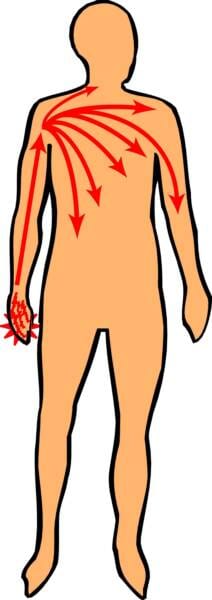RSD And Spread
Controversy has developed on the question of whether RSD can spread from one part of the musculoskeletal system (like an arm or a leg) to another part (like a different arm or leg). On one side of the camp, patients feel quite strongly that spread is a common occurrence. The opposite camp, usually physicians, feels that RSD does not spread and that it presents as a localized syndrome affecting the hand or upper extremity. Like most debates that have extreme points of view, the truth probably lies somewhere in the middle.

There is no doubt that many patients with RSD experience new symptoms in different body parts than where the RSD originated. While these new symptoms may share similar characteristics with the initial injury, it is certainly not a universal truth that they are due to the initial injury. In fact, distinct characteristics of these new pains often exist.
Nonetheless, since they were never there before, the patient perceives these new symptoms as spread of the original problem. The clinician, on the other hand, looks warily for objective findings such as vasomotor or sudomotor instability, edema, contracture, or at least hyperalgesia that is weather sensitive. In the absence of convincing evidence in this regard, the new symptoms, while noteworthy, do not necessarily represent spread.
Probably more important than the debate of whether there is true spread of RSD is the discussion of why these new symptoms are occurring. A few notable explanations include:
- neuro-humeral mechanisms (via transmitters such as epinephrine from both the nervous system and the adrenals);
- up regulation of both central and peripheral NMDA receptors;
- immune response to hidden infection (that once activated has no reason to stay localized to the injury site).
New symptoms in different body parts should not be assumed to either represent spread, be totally unrelated, or psychosomatic; an aggressive and objective assessment of the situation, without prejudice one way or the other, should occur. While a significant minority of RSD patients can be proven to have bona fide spread of their dystrophy most often, new complaints represent co-morbid medical disease.





